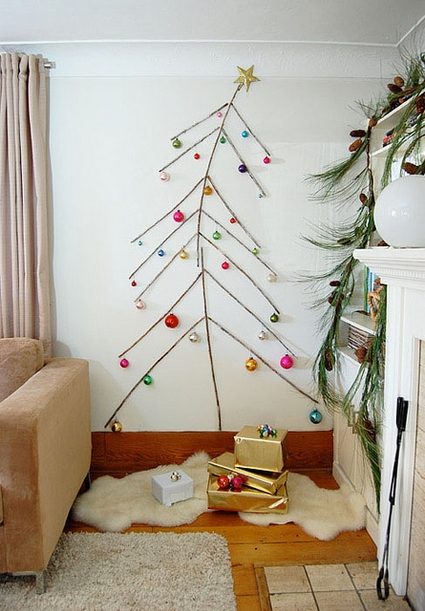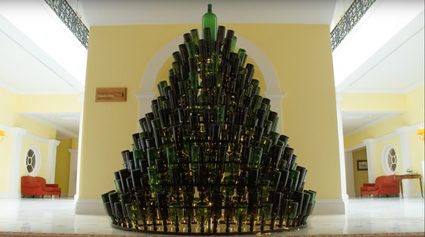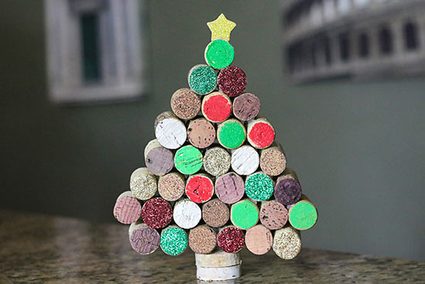Christmas Tree Footprint Calculator
It's hard to believe how the time flies – Christmas really is just around the corner! It's high time you started getting ready. After all, there's so much to do – the gifts, the holiday cleaning, the planning for your feast, and, perhaps most importantly, setting up the Christmas tree - arguably everyone's favorite part of Christmas preparations! 🎅
This year, we propose that you step up your X-mas game and think a little outside the box. Chances are, you already know how to decorate your tree effectively (if not, check our Christmas tree calculator) and make it look as fabulous as possible. How about going a step further and making it not only literally but also figuratively green?
If the idea of an eco-friendly, zero-waste Christmas tree is up your alley, you are in the right place.
Use our calculator to estimate the carbon footprint of your tree and get inspired by the many alternatives we offer! Read the text to find out more about how to have a very merry, white, and green Christmas! ❄🌲 Also, check our white Christmas calculator to find out the probability of a white charismas in your city if you live in the US or Canada.
Just how "green" is your tree? 🌲
Have you ever wondered about the ecological implications associated with Christmas? If the answer is no, we don't blame you. Although Christmas is a time of joy, it's also the time of running around and trying to get everything done at the same time. It's understandable that in the midst of all the preparations, many people opt for the easiest option – buying whichever tree you see first. "It's just one tree," you may be thinking. "What does it matter where I get it from"?
In reality, what most people don't realize is that it matters a lot. This graphic shows the average greenhouse gas emissions for some of the most popular types of Christmas trees:

As you can see, going out to buy another Christmas tree that won't survive past the holiday season entails some extra CO₂ emissions. Luckily, there are a number of zero-waste alternatives you can consider to make this Christmas more eco-friendly! The greenest you can get is by using the stuff you already own.
How to use our tree calculator? 🤔
So, what's the environmental impact of your Christmas tree? Of course, there are many factors that come into play when it comes to a tree's individual carbon footprint. We believe that our calculator takes all the most important ones into account, thus allowing for a satisfactory estimation of your tree's influence on the environment. To calculate it, follow this set of instructions:
1. Natural tree calculations
-
Start by choosing your tree size. The values describing the sizes in the calculator are approximations – your tree does not have to be exactly seven feet tall to be considered tall (but if you want to be exact, hit the custom option).
-
Indicate whether you'll be driving to get your tree or you'll get to it via foot, public transport, or sled. If you opt for driving, you'll need to input roughly how far you'll have to go and choose your car's engine's type, as these are important factors that influence the size of your tree's CO₂ footprint.
-
The only thing left to input is what will happen to your tree after Christmas. Choose the most fitting method and observe how drastically it changes the results!
2. Alternatives
So what can you do about all the CO₂ your tree would produce? We propose that you consider one of the many popular alternatives! Use the second part of our calculator to see just how much CO₂ you can save by setting up another kind of tree.
Start by deciding what kind of a tree you want to use instead of a real one – the way the calculator works changes depending on your choice! For the DIY projects, you will be given a short tutorial on how to make them within the calculator. No matter the alternative, you will be told how much CO₂ will your alternative tree save.
-
A plastic ♳ tree may save you from cutting down a real one every year, but it's still harmful for the environment, considering that it will never decompose like a real tree would! In this case, our tool will show you how many years it should be used for it to cancel out compared to your present (heh) tree.
-
One of the alternatives rapidly gaining popularity is a book tree 📚. This idea is directed at book owners - as you probably don't want to buy dozens of books just for the purpose of a single DIY project.
-
Do you happen to have a lot of cans and can't get around to getting rid of them? If the answer is yes, you can utilize them by building a can tree 🥫.
-
One of the most glamorous alternatives is the floating tree ❄️, originally created by the DIY blogger .
-
A relatively easy and fun-to-make alternative is the cardboard tree 📦. If you've moved recently and still have some leftover cardboard boxes lying around, this may be the way to go for you. Let your inner artist out!
With all the data you provided, the calculator will tell you the carbon footprint of your Christmas tree. You can switch the unit of mass and the type of CO₂ equivalent (mostly methane) to match your needs. And if you need a frame of reference, check out the field below to see real-world examples of things whose carbon footprint matches that of your tree.
Need inspiration? We've got you covered! 🎄
The five Christmas trees we propose in this calculator are not the only options. There are plenty of ways to make this season's tree interesting and eco-friendly. Check out our list and get inspired!
-
Twig Christmas tree
If you happen to have a garden with lots of twigs lying around, you can use them to build a Christmas tree that's both ecological and space-saving.

-
Wine bottle Christmas tree
This one is a real treat for wine lovers who already have the resources. If you happen to have a wine cellar and a tiered drying rack, enjoy a Christmas tree that is both ecological and relevant to your passion for wine.

- Wine cork Christmas tree
Here's an alternative for wine lovers who prefer to save some space. Instead of using whole bottles, utilize the corks to create a small but adorable Christmas decoration.

-
String light Christmas tree
If you want to save space and create a warm, homely atmosphere, consider opting for a simple string light composition.

-
Egg carton Christmas tee
If eggs are an essential part of your diet, consider saving the cartons from now on - especially if they are green! You can use them to build this charming egg carton Christmas tree.

Getting rid of your tree in (green) style 🐘
If you opt for a natural tree in the end - great! There is, however, one more thing you should not overlook. When talking about a Christmas tree's carbon footprint, one cannot forget the impact of a tree's disposal.
According to , what they call the "end of life" phase of a natural tree's life cycle has many varying environmental repercussions. For example, points out that, due to the release of methane gas during decomposition, a 2-meter-high tree with no roots has a carbon footprint of 16kg if put in a landfill.
Luckily, there are a lot of ways to avoid this. Here are a few we consider the best and most interesting.
1. Donate the tree to your local zoo – Yes, you heard that right! , either as a treat for some of the bigger animals (mostly elephants) or as a decoration for some of the enclosures. Restrictions may apply locally, so make sure to call your nearest zoo ahead of time to ask whether they accept such donations and, if they do, enjoy making an elephant's day a little brighter with a nice treat.
2. Turn it into mulch – If you chip the branches into small bits, you will have a perfectly good mulch you can use in your garden. This will not only be good for the environment but will also save you some money and a trip to a store the next time you need mulch.
3. Recycle it – If you're not up for turning your tree into mulch on your own, you can donate it to a recycling center. Such institutions exist in many areas, and they are more than happy to take your trees and turn them into chippings later used in local parks or woodlands. You can locate your nearest Christmas tree recycling place in the United States on .
4. Replant it – If you have a potted tree with some roots left, chances are it will survive for another few years if it's put into the soil again. If you don't have your own garden, contact your living area's administration and see if there is any communal space where you could plant your tree.
5. Create a fish habitat – For those of you who have a fish pond or a lake on your or a friend's property, using the tree as a fish habitat may be the way to go. Some game and fishery departments even offer to take used Christmas trees to dump them into community lakes and ponds for this exact reason.
6. Help preserve your local inanimate nature – A great example of such an initiative is , held annually in Brazoria County, Texas. The used-up Christmas trees donated by Texans are stacked along the eroding dunes, effectively serving as eco-friendly fencing. To make it even better, the decomposing trees provide the sand with nutrients, which in turn aids the growth of dune grass. Many other places in the world hold similar events, so make sure to check whether your area has its own!
Limitations of the Christmas tree alternatives calculator
Here at The Omni Calculator project, we aim to build the most complete calculators possible (hence Omni). Still, compromises are often needed, especially with such complex topics as the lifecycle of a Christmas tree. With this in mind, here is a list of the limitations of this calculator:
Natural tree 🌲
-
All data for the CO₂ stored within a natural tree is taken from white spruces in southeastern Quebec. This provides a good representation of other varieties of Christmas trees but will not be 100% accurate.
-
CO₂ measure for the tree is all the CO₂ gas that is absorbed during its growth phase – when the tree is cut down, this amount is all considered to be your Christmas tree. What happens to the stump/roots is not included.
-
The growth area of the tree is a square with sides 1.5 times its diameter.
-
CO₂ emissions during the tree's growth stage (fertilizer, pesticides, harvesting, etc.), the cost of water used to water the tree when it is at your home, and the CO₂ cost of a stand for the tree is not included.
-
The recycled option for the trees resting place is being burnt at a power plant to produce electricity.
-
In the compost and mulch option, we assume a tree is a natural alternative to fertilizer that would need to be produced otherwise and .
Artificial tree ♳
-
The cardboard used to package the tree is not included in the weight of the tree and is not modeled at all.
-
Trees made in China are assumed to be made in the Pearl River Delta area and leave via the port in Hong Kong. Getting the tree to the port is not modeled. Transport over the sea is via the shortest route.
-
The train freight distance is half of the country's width to account for average distances.
-
6% of the steel is recycled, while the PVC is unrecyclable.
We'd like to thank , without which this calculator would have been nigh impossible.
We hope that you've found our calculator both fun and informative, and everyone here at Omni Calculator wishes you a very Merry Christmas!
